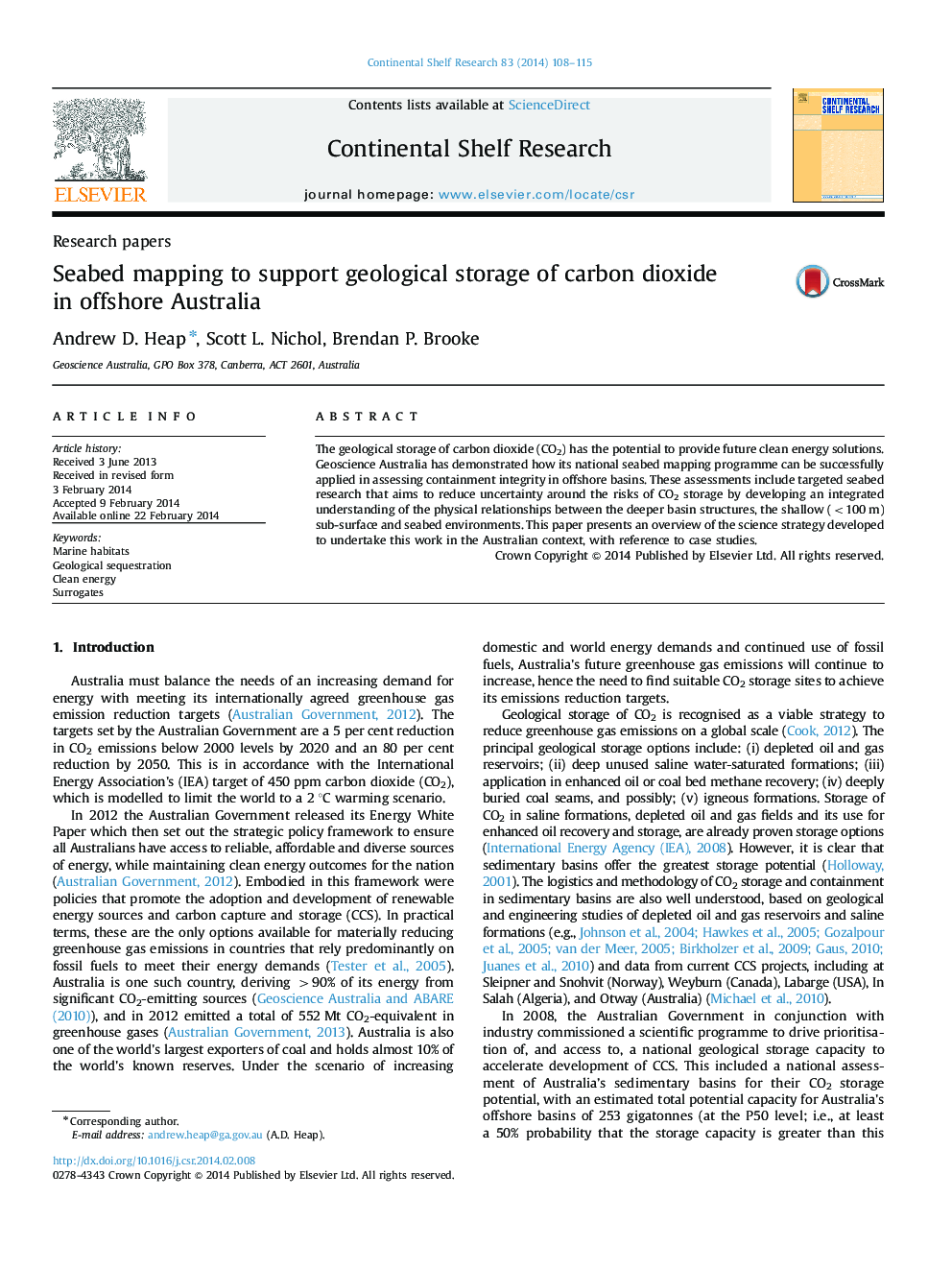| Article ID | Journal | Published Year | Pages | File Type |
|---|---|---|---|---|
| 4531836 | Continental Shelf Research | 2014 | 8 Pages |
•Geological storage of CO2 has the potential to provide future clean energy solutions.•Seabed mapping studies have application for geological CO2 storage assessments.•Assessments focus on links between deep basin structure and seabed environments.•Reduces uncertainty around the risks of CO2 storage, particularly containment.•Contains overview of science strategy in Australian context, with case studies.
The geological storage of carbon dioxide (CO2) has the potential to provide future clean energy solutions. Geoscience Australia has demonstrated how its national seabed mapping programme can be successfully applied in assessing containment integrity in offshore basins. These assessments include targeted seabed research that aims to reduce uncertainty around the risks of CO2 storage by developing an integrated understanding of the physical relationships between the deeper basin structures, the shallow (<100 m) sub-surface and seabed environments. This paper presents an overview of the science strategy developed to undertake this work in the Australian context, with reference to case studies.
